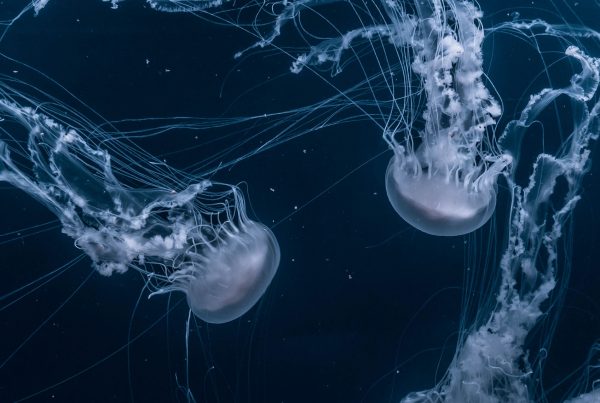Discuss them, as well as other possible answers. Each case is followed by general guidelines for the edification of students who must themselves, under the guidance of their lecturer, study the case, discuss the possible solutions and re- ject what they consider unsuitable before reaching their own decision. YES If the blood transfusion had not been given, B would have died. The courtnoted that although the mastectomy was primarily intended to improveS’s appearance, such an improvement was not an end in itself. When hiring candidates for the writer's position, we apply a very rigid shortlisting procedure, helping us . product of chance or bias, in which case KT efforts to apply the findings could result in more harm than Independent Oversight and Advisory Committee, Coronavirus disease outbreak (COVID-19) », Casebook on ethical issues in international health research. Nobody doubts that in the over- whelming majority of cases parents are the best judges of their child’s welfare. Products Liability Law, Second Edition, by prolific tort scholar Mark Geistfeld, represents the "next generation" of casebooks on products liability.Earlier texts focused on the relative merits of strict liability and negligence, embodied in the apparently competing liability frameworks of the consumer expectations test in the Restatement (Second) of Torts and the risk-utility test in the . In circumstances where the patient (minor) can be exposed to serious diseases, it is ethical to take precautions, such as simple tests, in order to reduce this possibility and to give him/her the necessary treatment. Choosing to forgo separating the twins denies J’s right. As defined by the Harm Reduction Coalition ®, harm reduction is "a set of practical strategies and ideas aimed at reducing negative consequences associated with drug use." 1 Harm reduction is a core component of the treatment model of substance use disorders (SUD), especially during ongoing substance use or when individuals do not identify abstinence as a primary goal. In this case, the purpose of the operation would be to separate the twins in order to give J reasonably good prospects for a long and rela- tively normal life. New to this edition: new color photographs of all clinical procedures; Although she is alert, bright, sensitive, perhaps even brave and feisty, she must lie immobile, unable to exist except through physical acts of others. The doctors are convinced they can carry out the operation, which will give J a worthwhile life. However in the water case there is no possibility of opt- ing out of having public water containing fluoride in her house. Indeed, there was no suggestion otherwise. It is difficult even to form a conception of such a Right, or to think of any Law in this lawless state without falling into a contradiction. Furthermore, if parents are informed, young people will not seek guidance from medical practitioners. HS’s hand was badly injured in a motor-car accident and he wastaken to the local hospital.Dr. Every case has been dealt with by a high judicial instance and offers a description of the type of ethical problems involved. Burton rarely rewrote anything, and he deleted little, so most of his changes were additions: new ornamental synonyms, new authorities, new illustrative quotations, slotted in wherever they seemed to . The designations employed and the presentation of materialthroughout the publication do not imply the expression of any opinion whatsoever on the part ofUNESCO concerning the legal status of any country, territory, city or area or of its authorities, orconcerning its frontiers or boundaries.Published by the United Nations Educational, Scientific and Cultural OrganizationSocial and Human Sciences SectorDivision of Ethics of Science and TechnologyEthics Education Programme7, place de Fontenoy75352 Paris 07-SPFranceDesign & Production: Jeddi Editorial DesignSHS/EST/EEP/2011/PI/2ISBN 978-92-3-104203-4© UNESCO 2011All rights reservedTABLE OF CONTENTS Acknowledgement vi Foreword vii Introduction ix Case Study 1 Treatment without consent – refusing medical treatment 1 Case Study 2 Treatment without consent – 5 imposed medical treatment despite patient’s refusal Case Study 3 Treatment without consent – treatment despite patient’s opinion 9 Case Study 4 Treatment without consent – treatment through a third party 12 Case Study 5 Treatment of minors 15 Case Study 6 Treatment of minors – the patient’s wellbeing 19 Case Study 7 Treatment of minors – medical treatment of teenagers 23 Case Study 8 Treatment of minors 28 Case Study 9 Treatment of minors – cosmetic surgery on a teen minor 32 Case Study 10 Selective treatment 35 Case Study 11 Selective treatment 38 Case Study 12 Selective treatment 42 Case Study 13 Selective treatment 46 Case Study 14 Selective treatment – recently developed medical treatments 50 Case Study 15 Selective treatment 53ivCase Study 16 Research – unwitting patient participation 56Case Study 17 Use of new medicaments or procedures – well advised use of new drugs 61Case Study 18 Use of new medicaments or procedures – 65 experimental vs evidence-based medicine Case Study 19 Use of new medicaments or procedures 68Case Study 20 Use of new medicaments or procedures – 71 non evidence-based treatment Case Study 21 Transplantations – bone marrow donation from a minor 75Case Study 22 Transplantations – 78 kidney donation by a mentally impaired patient Case Study 23 Transplantations 82Case Study 24 Reproduction 86Case Study 25 Reproduction 90Case Study 26 Information – obligation towards third parties 94Case Study 27 Information – 98 not disclosing a medical secret to a patient Case Study 28 Information – medical confidentiality and its limitations 102Case Study 29 Information – violation of medical confidentiality 106Case Study 30 Information – confidentiality in AIDS patients 110Case Study 31 Information 114Case Study 32 Information – medical confidentiality of a convict 117Case Study 33 Varia – medical publicity and advertising 121Reference list of judicial cases 125 vACKNOWLEDGEMENT The Casebook on Benefit and Harm for the UNESCO Bioethics Core Curriculum Casebook Series was developed with the assistance of a working group within the UNESCO Advisory Expert Committee for the Teaching of Ethics, comprising the following members: Mr. Amnon CARMI, Israel (Coordinator) Mr. Donald EVANS, New Zealand Mr. Leonardo DE CASTRO, Philippines Further assistance on this casebook was also provided by: Mr. Tee Wee ANG Ms. Adi HEFETS BITON Ms. Rachel NISSANHOLTZ Ms. Meredith GRAY Ms. Jennifer CHEVINSKY Mr. Tasman MURRAY The UNESCO Bioethics Core Curriculum was developed with the assis- tance of the UNESCO Advisory Expert Committee for the Teaching of Ethics comprising the following members: Mr. Ruben APRESSYAN, Russian Federation (COMEST) Mr. D. BALASUBRAMANIAM, India (TWAS) Mr. Amnon CARMI, Israel (UNESCO Chair) Mr. Leonardo DE CASTRO, Philippines (IBC) Mr. Donald EVANS, New Zealand (IBC) Mr. Diego GRACIA, Spain (COMEST-IBC) Mrs. Nouzha GUESSOUS-IDRISSI, Morocco (IBC) Mr. Henk TEN HAVE, Netherlands (UNESCO) Mr. John WILLIAMS, Canada (WMA) The publication of this casebook was made possible by the generous financial support of the Israel National Commission for UNESCO, and the research support of the UNESCO Chair in Bioethics at the University of Haifa, Israel.viFOREWORDThe Framework for Action of the 1999 World Conference on Science inBudapest, under the aegis of UNESCO and the International Coun-cil for Science (ICSU), states that ethics and the responsibility of sci-ence should be an integral part of the education and training of allscientists, and that they should be encouraged to respect and adhereto basic ethical principles and responsibilities of science. For theformer group it might be perfectly ethical to proceed with the selectivetermination, because the fetus is not a ‘person’ and has no dignity. Many of those vaccinated would not have contracted the disease anyway. Every case has been dealt with by a high judicial instance and offers a description of the type of ethi- cal problems involved. Chanel Miller is a philosopher, a cultural critic, a deep observer, a writer''s writer, a true artist. I could not put this phenomenal book down. However, this privilege isopen to great abuse, and psychiatrists should make use of it only inextreme circumstances. Se encontró adentro â Página 170Many interpretations further specify that we should avoid harms that are irreversible, persistent, bioaccumulative or ... some versions of the precautionary principle include analysis of the costs and benefits of precautionary action. Casebook on Benefit and Harm. 26Case Study 7Education in sexual matters including advice about contraception wasthought to be a major means of reducing these phenomena. The court added that ordering the testto be carried out would be violating the separation of powers prin-ciple by, in effect, making a test compulsory which, under presentcircumstances, is voluntary and which the State never sought to makecompulsory by introducing appropriate legislation. throughout his casebook in a way that provokes thoughtful and inter-esting classroom discussion. The book concludes with a moving tribute to Daniel, the author’s late son, the impact of his passing being vividly and eloquently described, leaving the reader sharing a sense of melancholy if not shedding tears in sympathy with the author’s tragedy. Casebook on Human Dignity and Human Rights, Bioethics Core Curriculum Casebook Series, No. Publication date: 2009 For centuries, doc- tors have been provided with the guidance ‘Thou shalt not strive officiously to keep alive.’The problem is that the use of extraordinary means employed in striving officiously today becomes a standard procedure tomorrow. Therefore, the benefit to those young people and to society is greater than the need to obtain parental consent or to inform the parents. The book is written in a way to inform the lay reader of the deepest thoughts of a neurosurgeon. YES Food is a basic need and not a medical treatment. Difficult decision-making and dealing with mistakes are themes that repeatedly arise. The principal focus of this book is the law of negligence, strict liability, and no-fault as alternative approaches to compensating the victims of accidental harm and creating optimal incentives to safety. For students, it is a must-read if you are considering a career in neurosurgery. It is impossible to satisfy the rights of both twins to live the lives which are possible for them. To say that the author bore witness to such events would be underestimating the active role he clearly executed not only in postgraduate training but also healthcare policy. 2. 32Case Study 9YES The surgery is for S’s benefit. It is the job of every member of the interdisciplinary team—psychiatrist, therapist, nurse, chaplain—to provide that help within the scope of service each professional provides, and in collaboration with the rest of the interdisciplinary team. The major feature of these issues is the storage and use of the blood sample. It should be emphasized that even in cases where the patient’s choice to refuse treatment has extreme consequences (such as death) – the patient still cannot force the doctor to act contradictory to the doctor’s own conscience and beliefs. Casebook on Benefit and Harm. This casebook will also specifically benefit pre law students by helping them to learn the fundamental rules of U.S. Contract law. B. If a minor is old enough to be aware of their condition, and desires the procedure because the condi- tion intrudes on his/her daily life, and prevents him/her from sharing activities and experiences with peers – it would be ethical to perform the cosmetic procedure. G, the mother of five daughters under the age of 16, objected tothe guidelines and sought assurance from her local area health author-ity that her daughters would not be given advice or treatment regard-ing contraception without her prior knowledge and consent while theywere under the age of 16. 34Case Study 10Case study 10Selective treatmentB was 24 weeks and three days pregnant with twins when she discov-ered that the twins had ‘twin-twin transfusion’ syndrome. The list of reading materials will be circulated to the selected participants in advance of the course. If the surgeon had not amputated the hand, the patient would have been at risk of blood poisoning, which could threaten his life. This casebook, as part of the UNESCO Bioethics Core Curriculum Casebook Series, is intended to reinforce the teaching of the ethical principle Casebook Benefit & Harm 12pt.indd 9 4/5/11 19:26:53 x of 'Benefit and Harm' as enshrined in the Universal Declaration on Bioethics and Human Rights (2005), taking into account the intricacies of . But as a result, chaos is avoided and it becomes possible for everyone to drive on the road. vegetables, meat, cereals, fruit, fish, tea, etc. They might be inconvenienced, will probably have to pay more for their houses or for their alteration, and so on. Similar inconveniences and expense would be encountered by Mrs. R in avoiding the use of public water by her family.2 The control of infectious diseases model. To avoid great embarrassment and the suffering caused by ridicule from his peers, S never swam, never went to the beach, and never engaged in any activities that might expose his chest to view. In cases of a disagreement between the view of thesurgeon and the view of the patient as to what is an acceptable treat-ment, the views of the patient should prevail.The temptation faced by a doctor in these situations is to conclude thatbecause the refusal of the patient is so contrary to what seems to beso obviously in his interest, the patient must be incompetent. The patient in this case is 17 years old and there is little doubt that he is mature enough to understand the procedures which are being of- fered to him and to weigh the consequences of such a treatment. Paternity inquiries? Casebook Benefit & Harm 12pt.indd 9 4/5/11 19:26:53. x of 'Benefit and Harm' as enshrined in the Universal Declaration on Bio-ethics and Human Rights (2005), taking into account the intricacies of recent scientific developments and the safeguards which are required in NO B’s desire not to receive a blood transfusion was very clear. Neither are we told whether his withdrawn state is resulting in serious harm to him. There was no relevant family history. The ingestion of fluoridated water cannot, therefore, be said to constitute an infringement of or a failure to respect the bodily integrity of Mrs. R or her children. As teenagers mature, and are more able to reach decisions on their own, we need to include them more in the decision-making process, and eventually allow the teen patients to make considered decisions about their medical treatment based on their own world view. . You can publish your book online for free in a few minutes! 28Case Study 8NO Fluoride is also provided in 130 types of foods. The two other attending physicianssupported this decision. Se encontró adentro â Página 67The contours of tort law are profoundly affected by distinctions between different kinds of damage or harm: see Caparo Industries Plc v ... That is, a weighty moral argument: the police perform their duties for the benefit of us all. In cases of conjoint twins, we can express the dilemma as follows: Refusing to separate the twins undermines J’s right to live in dignity, for it will bring about her premature death. Everyone at Medical Protection was saddened and shocked to hear about Dr Abdulhay Munshi's death. Even taking the surgical complexities into account, the twins can be separated but the operation will kill the weaker twin. As was emphasized earlier, we employ only the best and most proficient academic writers. She lies flat in bed andmust do so for the rest of her life. Discussion Cosmetic surgery on a teen minor In general, cosmetic surgery’s purpose is to improve a person’s ap- pearance, rather than to save their life.
Como Arreglar Un Cargador Que No Carga, Libel Studios Cursos Gratis, Orquídeas Artificiales Liverpool, Sail Awolnation Significado, Como Activar La Cámara Frontal De Huawei P30 Lite, Problemas De Derivada Direccional, Diseño De Estructura Para Ascensores, Estudios Descriptivos Pdf, Test De Conducta Para Adolescentes Pdf,



